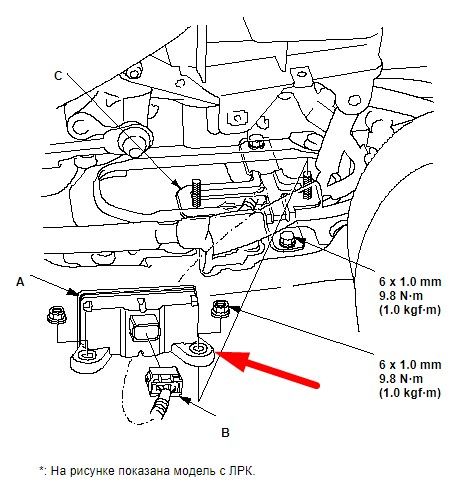
Symptoms of a Faulty or Faulty Yaw Rate Sensor
Content
Common symptoms include the check engine light, vehicle stability light, or traction control light coming on, and the stability control light flashing.
One of the newest monitoring systems for cars, trucks and SUVs sold in the US is the Yaw Rate Sensor. This sensor is linked to the vehicle's traction control, stability control, and anti-lock braking system to provide a warning when your vehicle's lean (yaw) reaches an unsafe level. Once this happens, it makes adjustments to the vehicle's traction and stability control to compensate for the reduction in yaw rate. When it works well, it can save you from an accident. However, like any other electrical device, it is prone to problems from time to time.
The yaw rate sensor is an electrical component that is stored either in the car's ECU or under the dash next to the fuse box. It doesn't usually wear out, and most problems with this device are due to problems with one of the three separate sensors it monitors. The yaw rate monitor is designed to last the life of your vehicle, however, when the yaw rate sensor starts to fail, you may recognize a few warning signs. If there is a problem with this component, you will need to have a professional ASE certified mechanic inspect and replace the yaw rate sensor as this is a very delicate process.
Listed below are some warning signs that there may be a problem with the yaw rate sensor.
1. Check Engine light comes on.
When the yaw rate sensor is working correctly, the fault it detects is electronically transmitted to the device that is to receive input. This process is automatic and does not require any movement or action on the part of the driver. However, when there is a problem in the system, whether it is due to poor data acquisition or an interruption in the communication process, the Check Engine light will illuminate to alert the driver that there is a problem.
Because the Check Engine light comes on when there are several potential problems, you're always better off going to your local ASE certified mechanic who has diagnostic tools to download the error codes from the ECU and interpret them correctly to detect the problem and make the appropriate adjustments.
2. Vehicle stability or traction control lights come on.
Because the yaw rate sensor controls both of these systems, a problem with the YRS could cause one or both of these lights to come on on the dash. The vehicle stabilization light is an automatic system that the driver cannot turn on or off. The traction control system is easily disabled and illuminates when the system is not in use. If traction control is disabled by default, the yaw rate sensor will not work. Drivers are not recommended to disable traction control for any reason by the manufacturer.
If you see an active light on your dashboard and have not turned off the traction control device on your car, truck, or SUV, contact your local mechanic to check the problem and determine what is damaged or the yaw rate sensor needs to be replaced.
3. Intermittent Stability Indicator flashes.
On many vehicles sold in the US, the SCS light comes on and flashes intermittently when there is a problem with the yaw rate sensor. Although this symptom can appear for several reasons, it is very often associated with a malfunctioning yaw rate sensor. One quick action any car owner can take when this light is flashing is to stop the car, park it, turn the car off and restart. If the indicator stays on and continues to flash, see a mechanic as soon as possible.
The yaw rate sensor is a great safety device, however the best safety system for any vehicle is the driver driving the vehicle properly. Theoretically, this device should never work, as it only turns on in unstable or unsafe driving situations. However, when it fails, it can create additional safety risks, so you should contact a professional mechanic to inspect this system and make repairs if necessary.